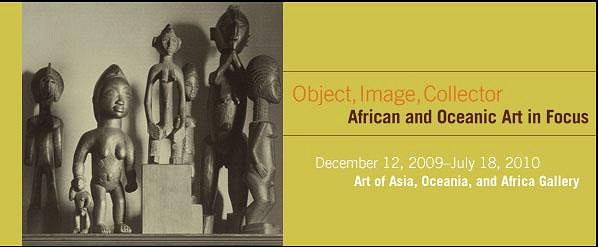Tiki Central / Locating Tiki / Museum of Fine Arts, Boston, MA (other)
Post #518026 by Zeta on Wed, Mar 17, 2010 1:58 PM
|
Z
Zeta
Posted
posted
on
Wed, Mar 17, 2010 1:58 PM
This one is for Bigbrotiki: Object, Image, Collector:
By juxtaposing pieces from Africa and Oceania selected from private collections with photographs, “Object, Image, Collector” explores the complex intertwining of the histories of these objects, photography, and collecting. Objects from the African continent and the Pacific came to Europe and the United States during the nineteenth and twentieth centuries. In their places of origin these objects may have served in rituals, denoted prestige, or have been utilitarian in nature, but they became endowed with different meanings after they arrived in the West, eventually metamorphosing from artifacts into works of art in the early decades of the twentieth century. How did this change in focus come about? In a vibrant visual narrative, “Object, Image, Collector” explores photography’s role in the promotion and recognition of African and Oceanic objects as art. Three-dimensional works, among them figurative sculpture, masks, and utilitarian objects selected from twenty-one private Boston-area collections, some displayed in public for the first time, are complemented by images from several important photographic endeavors, among them projects by American modernists Charles Sheeler and Walker Evans. With examples of art books and teaching materials, the exhibition also demonstrates the impact of photographic illustrations on creating a classical canon of African and Oceanic art, and how collectors—and museums—regard them today. |

